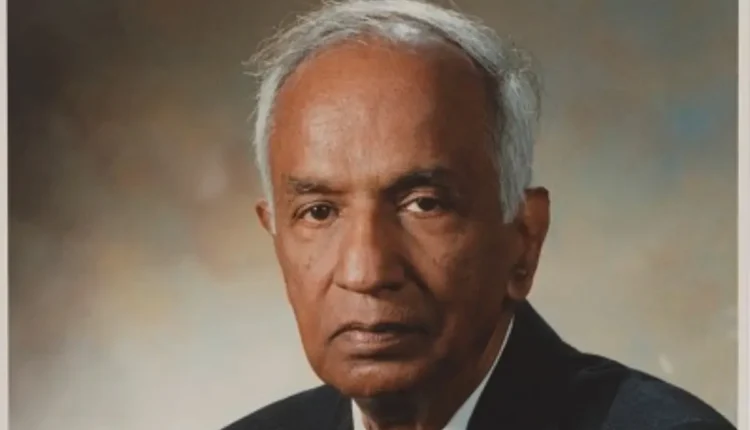In the vast cosmos that stretches beyond our comprehension, there are individuals whose intellectual brilliance transcends the boundaries of time and space. Subrahmanyan Chandrasekhar, a name etched in the annals of astrophysics, stands as a guiding star in the exploration of the universe’s deepest mysteries.
Subrahmanyan Chandrasekhar’s Stellar Journey
Born on October 19, 1910, in Lahore, Subrahmanyan Chandrasekhar belonged to a distinguished Tamil Brahmin family. His early exposure to intellectual pursuits, courtesy of his mother, set the stage for a lifelong journey into the realms of knowledge. Little did the world know that this young mind would evolve into a luminary in theoretical physics.
Chandrasekhar’s academic odyssey began at Presidency College, Madras, where he laid the foundation for his future pursuits. His early academic journey was marked by a pivotal moment – a lecture by Arnold Sommerfeld that inspired his first paper, “The Compton Scattering and the New Statistics,” in 1929. This marked the inception of Chandrasekhar’s exploration of the cosmos.
The Cambridge Chronicles
In 1930, the young physicist embarked on a transformative journey to the University of Cambridge, guided by R. H. Fowler. It was here that Subrahmanyan Chandrasekhar delved into the intricacies of the degenerate electron gas in white dwarf stars, adding relativistic corrections to Fowler’s work. His groundbreaking calculations laid the groundwork for the Chandrasekhar limit, a fundamental concept in astrophysics.
Notably, Subrahmanyan Chandrasekhar’s Cambridge years involved encounters with luminaries like Max Born, P. A. M. Dirac, and Niels Bohr, enriching his scientific tapestry. His dedication culminated in a PhD in 1933, followed by a prestigious Prize Fellowship at Trinity College.
A Career Among the Stars
Subrahmanyan Chandrasekhar’s journey continued across the Atlantic as he ventured to the United States in 1936. His association with the Yerkes Observatory marked a turning point, leading to a position at the University of Chicago, where he spent the entirety of his illustrious career.
His pioneering work on stellar dynamics, black holes, and colliding gravitational waves reshaped the contours of astrophysical understanding. His mathematical prowess unveiled the secrets of white dwarf stars, establishing the Chandrasekhar limit at 1.44 times the mass of the Sun.
The Man Behind the Mind
Beyond the scientific brilliance, Subrahmanyan Chandrasekhar’s life was a mosaic of cultural influences. Nephew to Nobel laureate C. V. Raman, he married Lalitha Doraiswamy, a fellow student at Presidency College. Their union saw Chandrasekhar becoming a U.S. citizen in 1953.
In 1983, Chandrasekhar was bestowed with the Nobel Prize in Physics, sharing the honor with William A. Fowler. However, the citation’s focus on his early work left him discontented, a testament to his ceaseless pursuit of excellence.
Legacy Among the Stars
Chandrasekhar’s impact extends beyond the boundaries of time. The Chandrasekhar limit, Chandra X-Ray Observatory, and numerous other concepts immortalize his contributions. His legacy lives on through 45 PhD students he mentored and the Subrahmanyan Chandrasekhar Memorial Fellowship established by his wife.
The Chandra Astrophysics Institute, named after him, continues to inspire future generations. Google honored him on his 107th birthday, acknowledging his profound influence on astrophysics.
In 2010, a symposium celebrated Chandrasekhar’s centenary, showcasing the continued relevance of his research. Titled “Fluid Flows to Black Holes: A Tribute to S. Chandrasekhar on his Birth Centenary,” it highlighted the enduring impact of his work.

